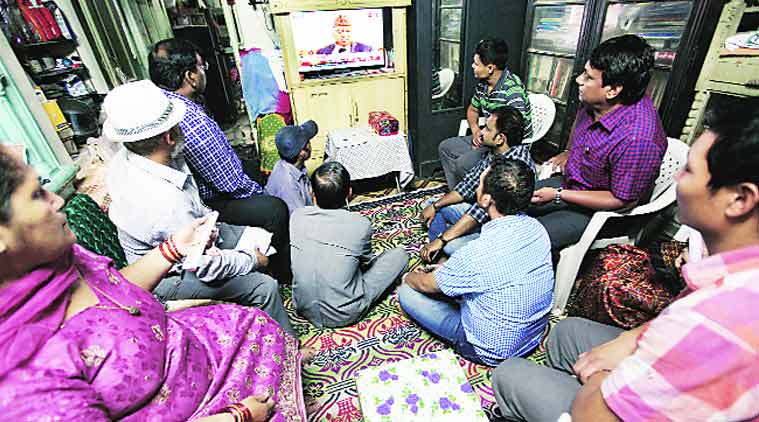 Members of the Nepalese community in the city were glued to television sets to get the latest news about their relatives back home. A scene from one such household in Deccan. (Source: Express Photo by Sandeep Daundkar)
Members of the Nepalese community in the city were glued to television sets to get the latest news about their relatives back home. A scene from one such household in Deccan. (Source: Express Photo by Sandeep Daundkar)
Since April 1, as many as 11 mild tremors were registered by the India Meteorological Department (IMD). However, they were just routine quakes registered in Assam, Manipur and Uttarakhand, all in a highly seismic zone (IV and V), and within 1000 km of the epicentre of Saturday’s 7.9 magnitude quake in Nepal. Experts say predicting quakes in advance is a science that has yet to come of age and that is why seismologists and geologists do not see these minor quakes as “precursors” to a major quake. Such mild tremors are not unusual in the region, as they were all in a highly seismic zone.
After the Nepal earthquake, the IMD registered almost 19 aftershocks on Saturday.

Although geologists say that such seismic activities are not unusual in the area, environmentalists argue that locating any large-scale hydro-electric projects in the area could be dangerous because of seismic activity. Some of them even linked big infrastructure projects to seismic upheaval.
[related-post]
Asked whether the 11 mild tremors were warning signs of the 7.9 magnitude quake that struck Nepal on Saturday, Dr N R Karmalkar, head of the department geology at Pune university said it would be difficult to say if the smaller tremors were precursors to it or not.
“Earthquakes are beyond predictability but we can say for sure that Himalayan region is active in terms of earthquakes,” he said.
Karmalkar said there were chances of more aftershocks.
Some environmentalists linked the heightened seismic upheavals to big infrastructure projects in the area. Karmalkar, however, said big infrastructure projects can only act as minor triggers at best. Asked about prediction of earthquakes, he said although significant research is happening in various parts of the world, the matter is still in the realm of speculation.
Environmentalist Parineeta Dandekar said that in the last two years, landslides had increased in the area where the mild tremors were felt, a fact she says can correlate quakes to increased big projects.
Story continues below this ad
The United States Geological Survey (USGS) estimated the loss of life in the Nepal quake to be between 1000-10,000 and the economic loss to be around 9-10 per cent of the GDP of Nepal.
“Assam, Sikkim and Arunachal Pradesh have major hydropower projects. These projects involve changing hydrology of rivers as well as major changes in topography,” she said. Instead of pushing for such projects, earthquake resistant structures should be constructed, Dandekar said.
Citing the Sikkim quake of 2013 as an example, Dandekar said 4 workers died in a tunnel for one of the 6 dams being built on the Teesta river. “This should be a wake up call for us,” she warned.

 Members of the Nepalese community in the city were glued to television sets to get the latest news about their relatives back home. A scene from one such household in Deccan. (Source: Express Photo by Sandeep Daundkar)
Members of the Nepalese community in the city were glued to television sets to get the latest news about their relatives back home. A scene from one such household in Deccan. (Source: Express Photo by Sandeep Daundkar)






